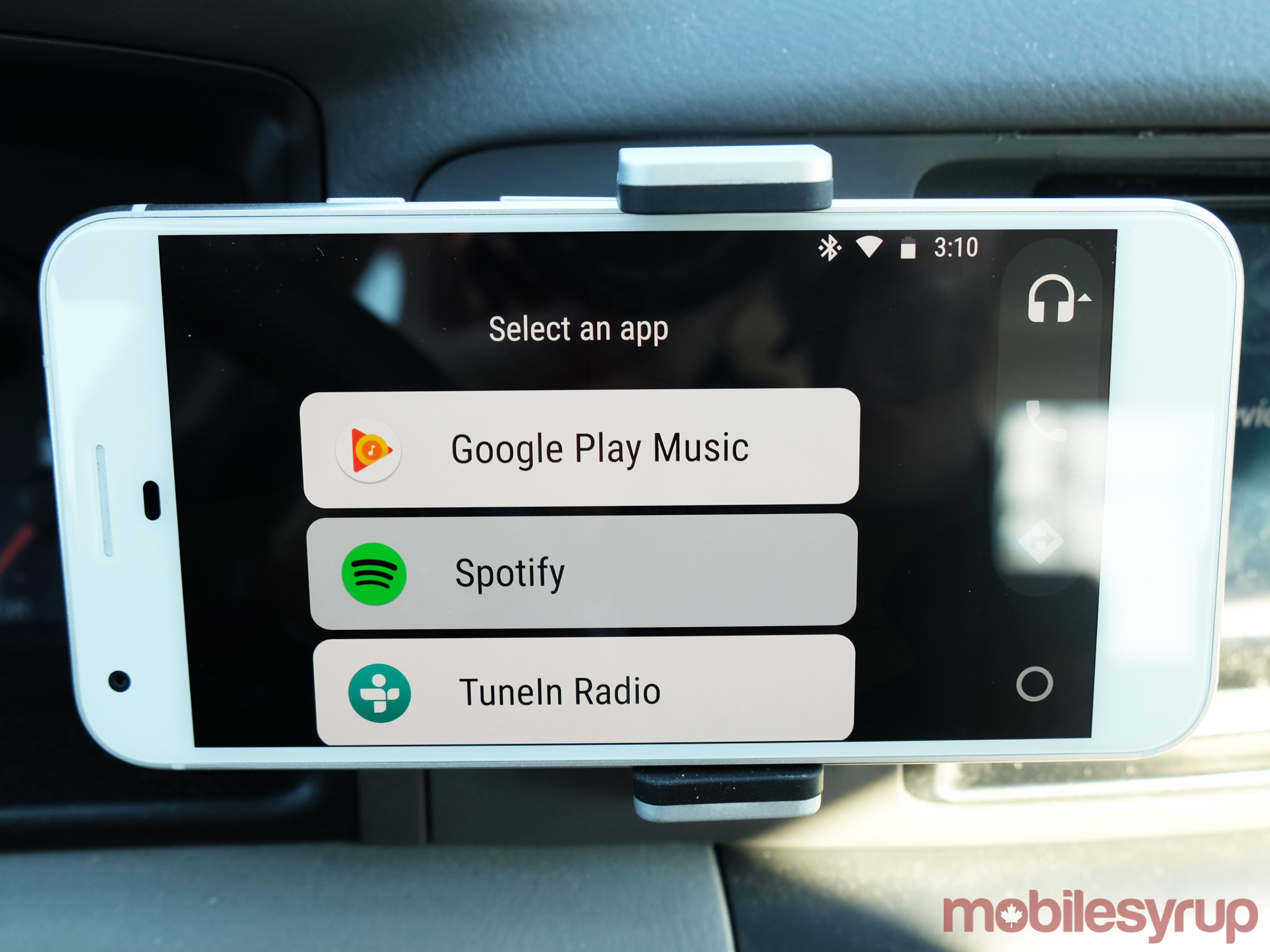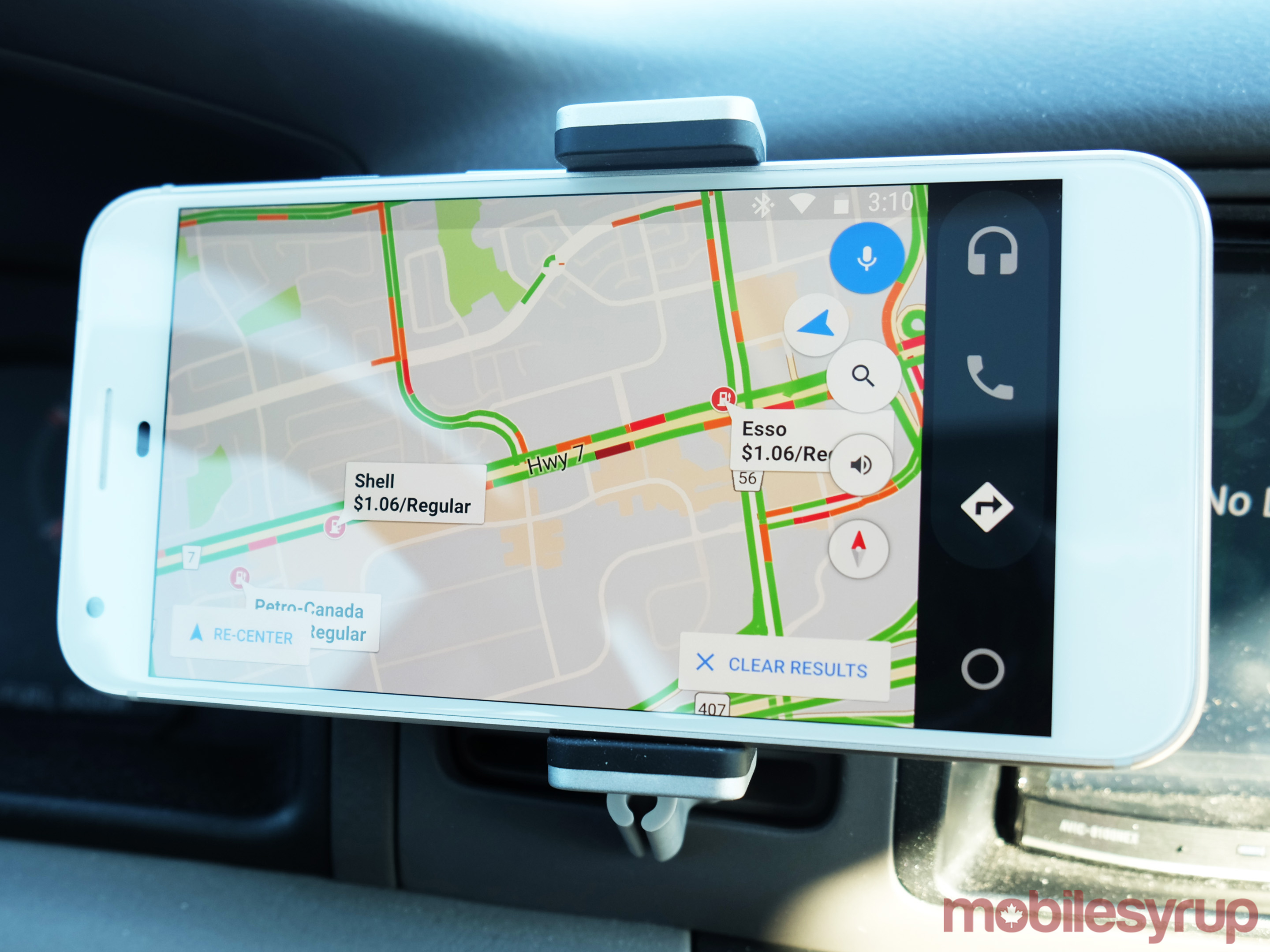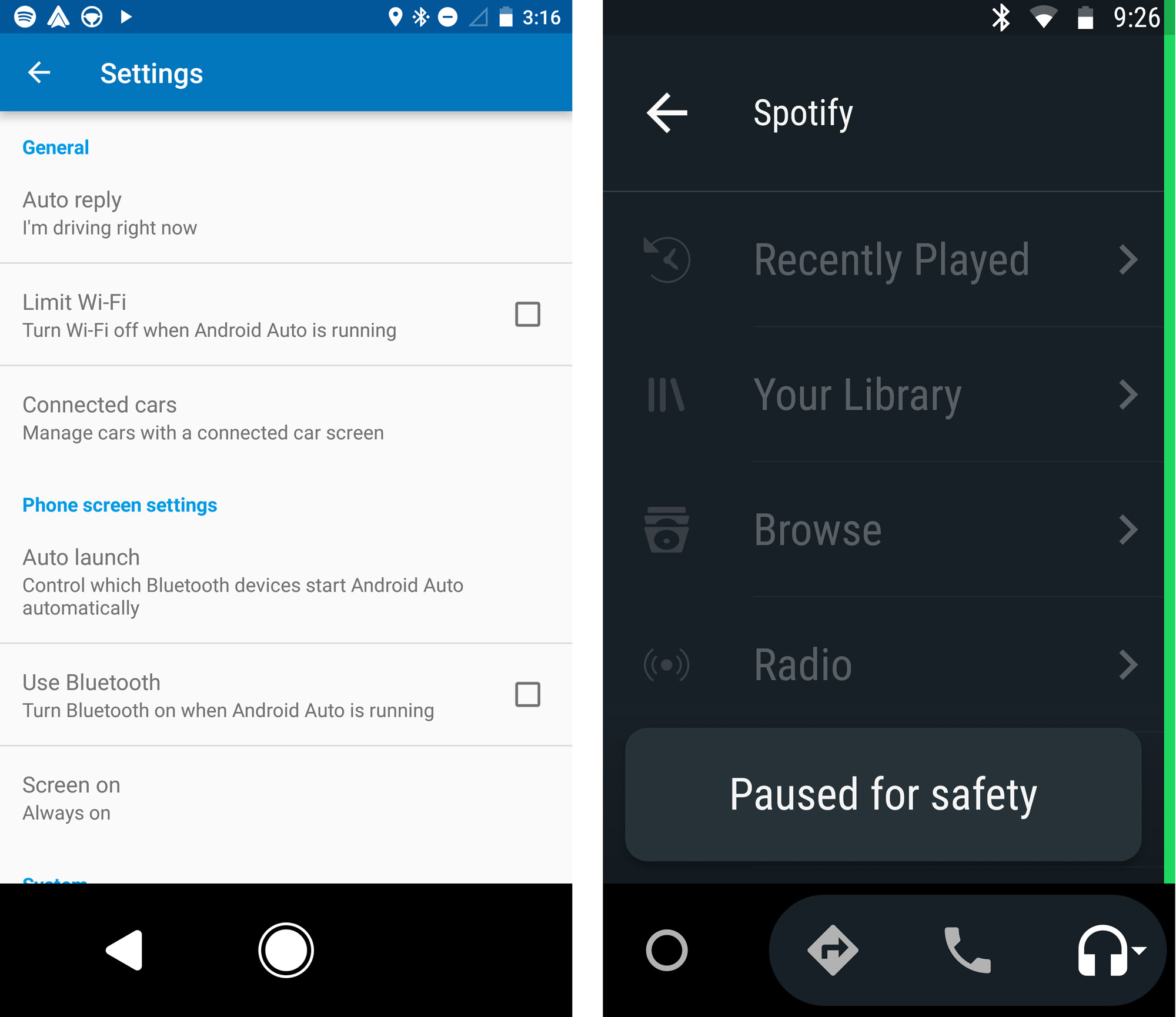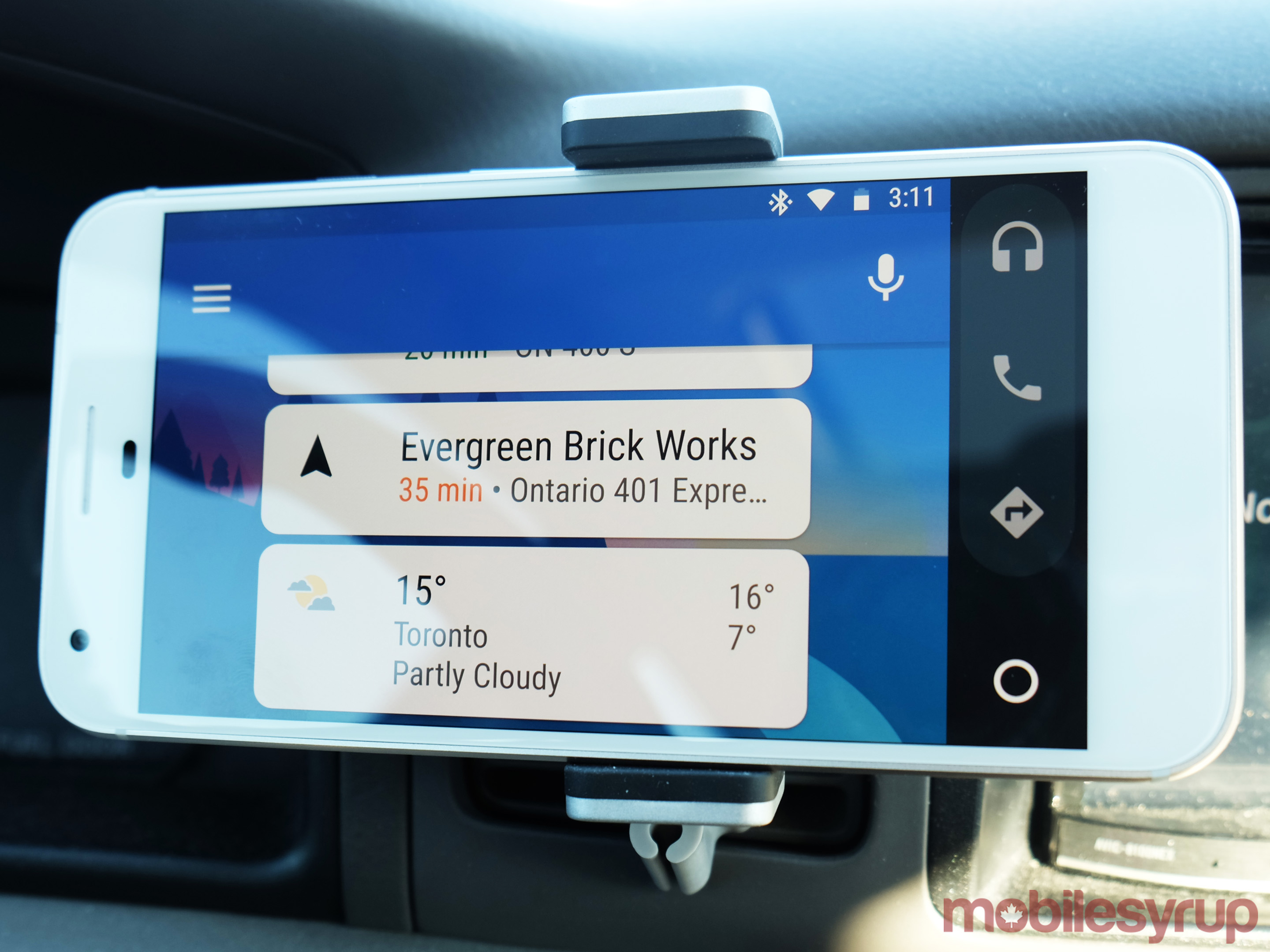
When Google announced that it planned to allow Android Auto to run off a smartphone back at Google I/O, it was arguably the best way to introduce the platform to a much wider consumer subset.
Having access to the company’s automotive software has required one of two things thus far: either buying a car with a compatible infotainment system, or buying and installing an aftermarket head unit that was compatible.
Either choice is a pricey proposition, and not always practical for newer vehicles. By making Android Auto a standalone app with 2.0, Google is aiming to bridge that gap when just about every vehicle make and model leading up to 2015 has no hope of ever getting it from the automakers. When was the last time you updated your in-car infotainment software? And if you did, what did it get you?
Doing it this way addresses a major problem regarding safer smartphone usage in the car. An overwhelming majority of vehicles on the road have no access to Google’s automotive platform, but for those with Android phones, 2.0 is a free download away.
The basics
In its current form, Android Auto is software that resides on an Android phone and projects to a compatible head unit in the car. The phone needs to be running on 5.0 Lollipop or later to run it, an existing compatibility requirement for the app too.
Using a platform designed for 7-inch (or larger) displays looked and felt different on a phone like the Pixel XL and its 5.5-inch screen, comparatively speaking. The phone needed to be mounted on a vent, the dashboard, windshield, or a holder attached to the 12-volt socket to be visible and reachable for touch input. Plugging it in to charge was also smart because of how much battery life the app needs. If your car has a dedicated USB port for smartphones, plug it into the one that isn’t, so as not to confuse the infotainment system into thinking you prefer a wired connection over a wireless one for the app.
Bluetooth isn’t necessary to run it, but does make things much easier when audio can stream to the car stereo. Despite being in a car that is 10 years old, I was fine because I have a Pioneer aftermarket head unit installed with Bluetooth functionality. An alternative is to plug the phone in to the Aux-In input and have audio run through that. Adding a Bluetooth earpiece for calls would cover all the bases.
Unfortunately, tablets aren’t part of the mix here, which feels like a major omission. Google’s reasoning is in focusing on hands-free calling and messaging, where SIM cards generally slot inside phones, except tablets have larger displays that would make the platform look more natural.
Either way, a tablet version of the app isn’t available on Google Play. Mind you, do-it-yourself setups are always possible, like mounting an Android tablet somewhere on the dash to run the app. The primary need at that point is to have a hotspot or in-car Wi-Fi for the tablet to connect to, unless you already have a working SIM slotted in for data.
Connectivity and layout
Setting up the app is essentially the same as it would be if tethered to a compatible system. The step-by-step guide is basic, and the app does need permissions access to things like the phone, messaging and location to plug in to those features.
The layout is also the same, save for some minor differences. The familiar card layout is front and centre, while the menu options are moved to the side to make room (they are at the bottom for the in-car version). They do shift to the bottom when running the app in portrait mode. App settings are on the top left, with Google Now activation on the microphone icon on the top right. A circle home button is an exit out of the app and back to the home screen.
Making the platform entirely mobile not only liberates which vehicle it runs in, but also who can control it in the car. A passenger can handle the music playlist or seek out directions by taking the phone in hand. The static location of the in-car platform made it accessible only to the driver and front passenger, whereas even those sitting in the back can participate when need be with this app.
Under normal circumstances with the tethered in-car setup, the phone is all but disabled, but here, the app is entirely functional from the handset itself. Indeed, I was able to set up navigation routes at home before I even left to drive somewhere.
Google Now is integrated, but not Google Assistant. Once the Pixel XL started running the app, saying “OK Google,” did nothing. Not even Now popped up to attention waiting for a command. As is consistent with the in-car verison, tapping the microphone button opens up Now for calls, messages, mapping or music playback. The Assistant platform running on Pixel phones is currently silenced whenever the Android Auto app runs, so if you’re looking for it to recite a poem or tell you a joke, it’s not happening.
There’s no word yet on when that integration is going to happen, but it’s a safe bet that Google won’t miss an opportunity to flick that switch eventually.
Things get a little mixed when it comes to how the app integrates with in-car controls. For example, I could switch tracks or adjust volume using the buttons on my head unit, but if I had steering wheel controls, I’m not sure I would be able to activate Google Now or initiate a call that way. My car doesn’t have steering wheel controls, so I can’t be sure. Once I get the chance to try it in a car that does, we will update this review to reflect that experience.
In the car
Looking at a 5.5-inch display for contextual information while driving wasn’t always practical. Large fonts and icons help simplify getting around the app, and the responsiveness of the Pixel XL’s display was noticeably faster than on many infotainment screens I’ve tested.
As I mentioned earlier, searching and setting up navigation routes before getting into the car was one of the most valuable time-saving features. Granted, this was already possible with Google Maps anyway, because the in-car Android Auto platform would know the most recent search queries. The difference here with the app is that the sequence feels almost instant. I’m waiting in line to buy dinner at one venue, and as a test, I sought a route to another particular destination. Once I approached the car, I started navigation and it informed me on traffic conditions, along with whether the venue would be closed by the time I arrived. In other words, I didn’t have to be in the car to set anything up.
It’s a usage pattern that permeates the whole app. I could navigate Spotify, Google Play Music, TuneIn Radio or compatible podcast and audiobooks apps in advance, limiting actual input once I started the engine. On that point, Google has embedded a safety feature to briefly pause input after a series of touches — something that can’t be turned off.
The settings offer some handy options. If running on a data connection, I could have Wi-Fi turn off automatically once the app started running. I could create my own auto-reply message for incoming calls or texts. Pocket detection waits until the phone is out of pocket or bag to start the app.
One of Android Auto’s inherent strengths, especially compared to Apple’s CarPlay, is the relative depth of third-party app compatibility. Messaging apps, like Hangouts, WhatsApp, Telegram and Kik are supported. Skype works, but it won’t do video, only audio calls. Various music apps, some that may not be popular in North America, are available, but some are certainly recognizable, like Deezer, Stingray and djay.
The absence of Waze still feels like a gaping hole. Google Maps is fine, but having some flexibility on the mapping front would be appreciated. Hopefully, Google commits to its promise to launch it before year’s end. The overall list of compatible apps hasn’t grown this year as one might have expected it would, but at least the level of choice is a little varied. Here’s hoping traction speeds up next year.
Google Now
If you’ve used Android Auto before, you won’t find any real surprises here. Voice commands are basically the same as they’ve always been on the platform, only now that Google Assistant has debuted with the Pixel phones, I wanted that level of intelligence to work in the car.
Not that Now isn’t serviceable, because it is. It’s just that Assistant is better at recognizing commands, and offers deeper integration. All told, that would make Android Auto easier and safer to use.
As is, though, Google didn’t mess with anything. Provided the phone can hear you, it will respond to a command as best it can. I asked it for the score in a hockey or basketball game, and it obliged. I dialed a number or sent a message, and it went smoothly. The basics are covered, but more is always appreciated when safety is paramount in a vehicle. It would also be nice to bring Now to life purely through voice. I tried many times, and couldn’t make it happen with the 2.0 app.
Wrap Up
Even if Android Auto 2.0 is a veritable clone of the original in-car platform, the result is worthy on its own. In-car infotainment is a fragmented mess that will take years to unravel, and with hardware installs very limited in newer, more complex vehicles, a universal methodology like this makes a lot of sense.
Android as an operating system is equally fragmented. A report from Statista found versions from 5.0 Lollipop or later made up 53.7 percent of the market as of September. The release of 7.0 (and 7.1) Nougat is too soon to impact that number further upward, but only slightly more than half of Android users will have access to the app.
The 2.0 app will be released in the 30 countries where Android Auto is already available, including Canada. Statista didn’t break down its figures by country, so later versions of Android may be more prevalent here than in other countries.
The point is that this is a free and easy way to improve smartphone integration in a vehicle, sticking closely to the original layout. For any user who can download and run it, Android Auto 2.0 is worth trying out.
Related: Android Auto review
MobileSyrup may earn a commission from purchases made via our links, which helps fund the journalism we provide free on our website. These links do not influence our editorial content. Support us here.






